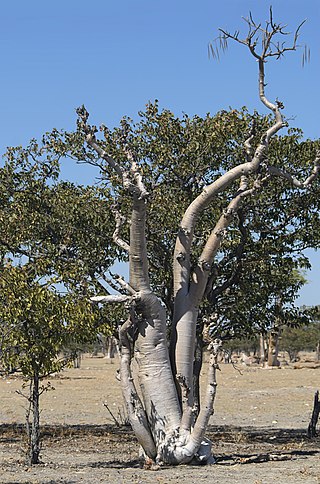
Moringa is the sole genus in the plant family Moringaceae. It contains 13 species, which occur in tropical and subtropical regions of Africa and Asia and that range in size from tiny herbs to massive trees. Moringa species grow quickly in many types of environments.
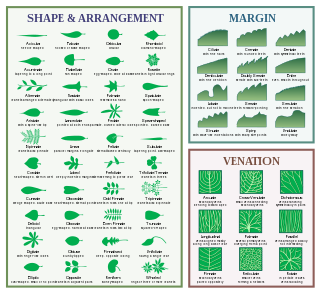
The following terms are used to describe leaf morphology in the description and taxonomy of plants. Leaves may be simple or compound. The edge of the leaf may be regular or irregular, may be smooth or bearing hair, bristles or spines. For more terms describing other aspects of leaves besides their overall morphology see the leaf article.

Ipomoea aquatica, widely known as water spinach, is a semi-aquatic, tropical plant grown as a vegetable for its tender shoots. I. aquatica is generally believed to have been first domesticated in Southeast Asia. It is widely cultivated in Southeast Asia, East Asia, and South Asia. It grows abundantly near waterways and requires little to no care.

Cynoglossum is a genus of small-flowered plants in the family Boraginaceae.

Cucumis anguria, commonly known as maroon cucumber, West Indian gherkin, maxixe, burr gherkin,cackrey, and West Indian gourd, is a vine that is indigenous to Africa, but has become naturalized in the New World, and is cultivated in many places. It is similar and related to the common cucumber (C. sativus) and its cultivars are known as gherkins.
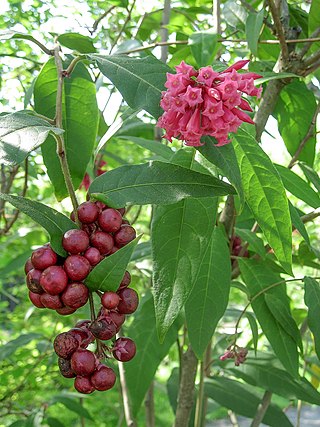
Cestrum is a genus of — depending on authority — 150-250 species of flowering plants in the family Solanaceae. They are native to warm temperate to tropical regions of the Americas, from the southernmost United States south to the Bío-Bío Region in central Chile. They are colloquially known as cestrums or jessamines.

Avicennia marina, commonly known as grey mangrove or white mangrove, is a species of mangrove tree classified in the plant family Acanthaceae. As with other mangroves, it occurs in the intertidal zones of estuarine areas.

Acanthus is a genus of about 30 species of flowering plants in the family Acanthaceae, native to tropical and warm temperate regions, with the highest species diversity in the Mediterranean Basin and Asia. This flowering plant is nectar producing and is susceptible to predation by butterflies, such as Anartia fatima, and other nectar feeding organisms. Common names include Acanthus and bear's breeches. The generic name derives from the Greek term ἄκανθος (akanthos) for Acanthus mollis, a plant that was commonly imitated in Corinthian capitals.

Trichostema lanceolatum, with the common names vinegarweed and camphor weed, is an annual flowering herb of the mint family native to western North America.
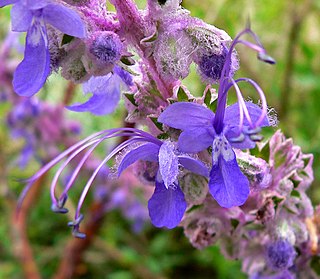
Trichostema lanatum, the woolly bluecurls, is a small evergreen shrub or sub-shrub native to arid coastal chaparral regions of California and the northern parts of Baja California.

Cynoglossum amabile, the Chinese hound's tongue or Chinese forget-me-not, is a species of flowering plant in the family Boraginaceae, native to Asia. A hardy annual growing to 50 cm (20 in), it has hairy leaves and cymes of sky-blue flowers in late summer. This plant, closely related to the common forget-me-not of temperate gardens, is also grown as an ornamental. In cultivation in the UK it has gained the Royal Horticultural Society's Award of Garden Merit..

Cynoglossum officinale is a herbaceous plant of the family Boraginaceae.

Solanum lanceolatum, with the common names orangeberry nightshade and lanceleaf nightshade, is a species of nightshade. It is native to regions of South America, including the Cerrado ecoregion of the Tropical and subtropical grasslands, savannas, and shrublands biome, primarily in Brazil.
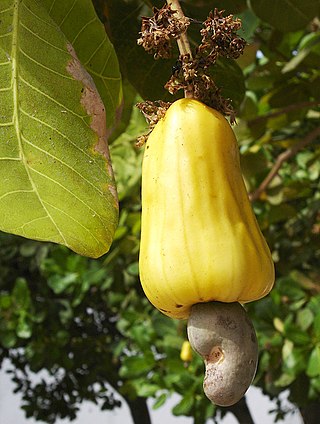
Traditional Brazilian medicine includes many native South American elements, and imported African ones. It is predominantly used in areas where indigenous groups and African descendants reside, like in the northeast coast, nearly all interior regions including Amazon regions, savannahs, rainforest, foothills, and Pantanal. According to Romulo R. N. Alves, "although Brazil's health system is public...use of traditional remedies and rituals provide an economical way of healing for much of the populace, but that also does not mean that wealthy Brazilians don't seek it out as well. Traditional medicine is a deep part of Brazilian heritage."
Dialectica aemula is a moth of the family Gracillariidae. It is known from Australia, India (Bihar) and Nepal.
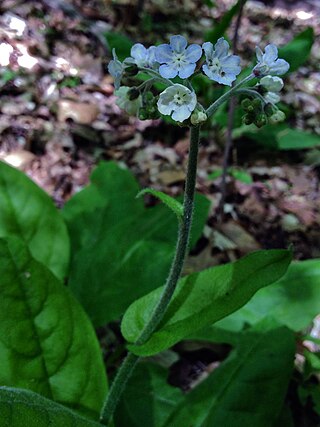
Andersonglossum virginianum, known as southern wild comfrey, is a flowering plant in the borage family native to North America. It is also sometimes called blue houndstongue.
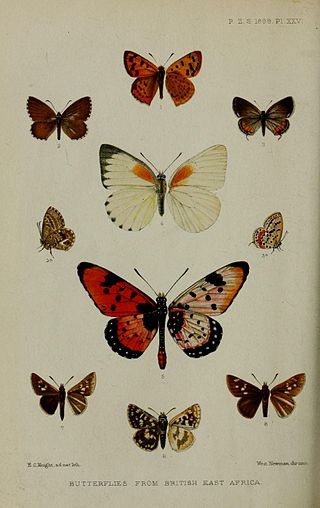
Euchrysops crawshayi, Crawshay's blue, is a butterfly in the family Lycaenidae. It is found in Kenya, Uganda, Tanzania, Burundi, Rwanda, Sudan and the Democratic Republic of the Congo. The habitat consists of moist savanna.

Ficus sur, with the common names Cape fig and broom cluster fig, is a widespread Afrotropical species of cauliflorous fig.

Cynoglossum zeylanicum, also called the Ceylon hound's tongue, Ceylon forget-me-not, and Indian hound's tongue, is a species of flowering plant in the family Boraginaceae. It is found throughout Asia. It has also been introduced to the Americas.





















